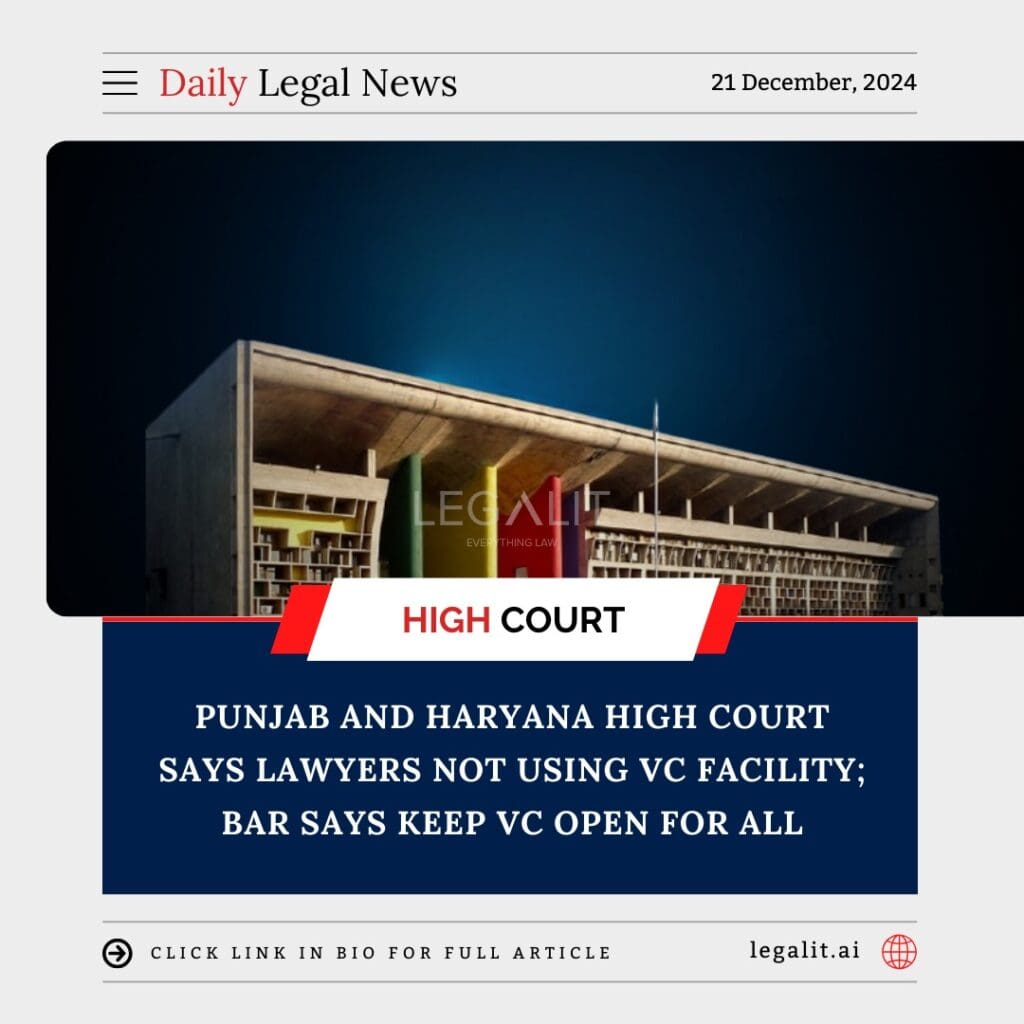
The Punjab and Haryana High Court recently addressed an issue concerning the limited use of virtual court facilities by lawyers. The court noted that many lawyers were not utilizing the video conferencing (VC) facility provided by the court for hearings. In response, the Punjab and Haryana Bar Association has raised concerns, urging that the VC facility should be made available to all lawyers, ensuring equal access for those who wish to attend hearings virtually.
Background
In the wake of the COVID-19 pandemic, courts across India adopted virtual hearing systems to ensure the continued functioning of the judicial system while adhering to health protocols. These virtual court facilities, via video conferencing, were introduced as a means to ease the burden on physical court appearances and provide convenience to lawyers and litigants, especially during the pandemic’s peak.
However, the Punjab and Haryana High Court’s recent observation about lawyers not utilizing these facilities suggests that there may be a reluctance or failure to embrace the virtual hearing option. This has raised questions about the accessibility and practical implementation of virtual hearings, as well as whether the system is being fully leveraged for the benefit of all stakeholders in the judicial process.
Key Arguments
Court’s Stand
- Concerns Over Underuse: The Punjab and Haryana High Court expressed its concern that despite the availability of virtual hearing facilities, many lawyers were not availing themselves of the option. The court highlighted that the system was intended to ease the burden on litigants and the judiciary, making the judicial process more efficient and accessible.
- Encouragement for Virtual Hearings: The court’s comment suggests a push towards encouraging lawyers to use the virtual facilities, especially given the convenience and efficiency they provide. The court may be aiming to ensure that the benefits of virtual hearings are fully realized and not underused.
Bar Association’s Stand
- Equal Access for All Lawyers: The Punjab and Haryana Bar Association, on the other hand, has advocated for the open availability of the virtual court facility for all lawyers. The Bar has expressed that the VC facility should not be limited or selectively available but should be accessible to every lawyer who wishes to use it.
- Ease of Access and Flexibility: The Bar’s stance is that the virtual facility provides flexibility, particularly for lawyers who may face logistical challenges in attending court physically. This is especially relevant in cases where travel to the court is time-consuming or expensive, making virtual hearings an efficient alternative.
Court’s Observations
The Punjab and Haryana High Court acknowledged that while the virtual hearing system was introduced to streamline judicial proceedings and improve access, it is not being used to its full potential by some lawyers. The court’s remarks suggest that it is concerned about the underutilization of a resource that could improve efficiency within the judicial system.
However, the court did not make any immediate directives but instead pointed out the need for lawyers to embrace the facility more widely. This could imply that, in future, the court may encourage or even mandate the use of VC facilities for hearings unless there is a compelling reason not to do so.
Legal and Policy Implications
- Increased Emphasis on Technology in Courts: This issue reflects the growing importance of technology in the judicial system. It underscores the need for both the judiciary and the legal community to adapt to technological advancements, ensuring that digital platforms are fully utilized to improve efficiency and accessibility.
- Uniform Access to Virtual Facilities: The call from the Bar Association for equal access to VC facilities raises concerns about fairness in access to virtual hearings. It suggests that the system should be standardized and open to all, ensuring that every lawyer has the opportunity to appear in court virtually if they choose to.
- Potential Reforms in Court Procedures: The ongoing discussion about virtual hearings could lead to reforms in how hearings are conducted, with a greater focus on digital systems and online access. Courts may continue to expand and refine the infrastructure supporting virtual hearings, making them more user-friendly and accessible.
Conclusion
The issue raised by the Punjab and Haryana High Court regarding the limited use of virtual court facilities highlights an ongoing challenge in the judicial system’s adaptation to digital technologies. While the court is encouraging the use of these facilities, the Bar Association has emphasized the need for equal access and the importance of ensuring that the system is open to all lawyers. As the legal community continues to navigate the integration of technology into court proceedings, this discussion will likely contribute to shaping policies and reforms around virtual hearings in the future.